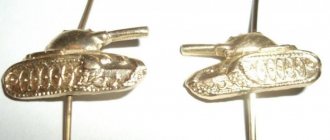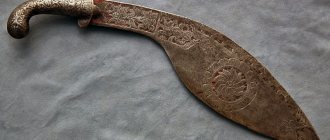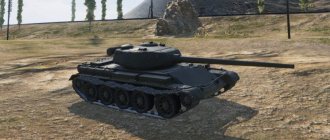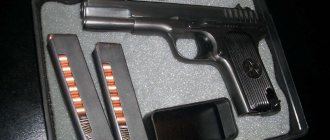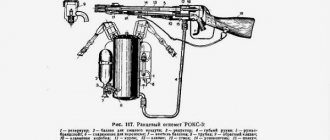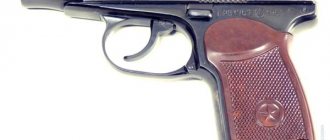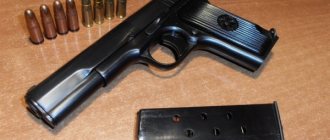Roman army in the III-II centuries. BC.
By the 3rd century. BC. Rome became the strongest state in Italy. In continuous wars such a perfect instrument of attack and defense was forged - the Roman army.
Its entire strength usually amounted to four legions, that is, two consular armies. Traditionally, when one consul went on a campaign, the second remained in Rome. If necessary, both armies operated in different theaters of war.
The battle order of the Roman legion in the 3rd century. BC.
The legions were accompanied by allied contingents of infantry and cavalry. The legion of the Republic era itself consisted of 4,500 people, 300 of them were horsemen, the rest were infantry: 1,200 lightly armed soldiers (velites), 1,200 heavily armed soldiers of the first line (hastati), 1,200 heavy infantry made up the second line (principles) and the last 600, the most experienced warriors represented the third line (triarii).
The main tactical unit in the legion was the maniple, consisting of two centuries.
Each century was commanded by a centurion, one of them was also the commander of the entire maniple. The maniple had its own banner (badge). Initially it was a bundle of hay on a pole, then a bronze image of a human hand, a symbol of power, was attached to the top of the pole. Below, military awards were attached to the banner staff.
The armament and tactics of the Roman army in ancient times did not differ significantly from those of the Greeks. However, the strength of the Roman military organization was its exceptional flexibility and adaptability: as the wars that the Romans fought, they borrowed the strengths of enemy armies and changed their tactics depending on the specific conditions in which a particular war was fought.
Infantryman's weapons.
Thus, the traditional heavy weapons of the infantryman, similar to the hoplite weapons of the Greeks, changed as follows.
The solid metal armor was replaced by chain mail or plate armor, which was lighter and less restrictive to movement. Leggings were no longer used, because instead of a round metal shield, a semi-cylindrical one (scutum) about 150 cm high appeared, covering the entire body of the warrior, except for the head and feet.
It consisted of a plank base covered with several layers of leather. The edges of the scutum were bound with metal, and in the center it had a convex metal plaque (umbon).
The legionnaire had soldier's boots (kaligs) on his feet, and his head was protected by an iron or bronze helmet with a crest (for a centurion, the crest was located across the helmet, for ordinary soldiers - along).
Roman weapons
If the Greeks had a spear as their main type of offensive weapon, the Romans had a short (about 60 cm) sword made of high-quality steel. The traditional Roman double-edged, pointed sword (gladius) has a rather late origin - it was borrowed from Spanish soldiers when the Romans experienced its advantages in hand-to-hand combat.
In addition to the sword, each legionnaire was armed with a dagger and two throwing spears. The Roman throwing spear (pilum) had a long (about a meter), thin tip made of soft iron, ending with a sharply sharpened and hardened sting. At the opposite end, the tip had a groove into which a wooden shaft was inserted and then secured.
Such a spear could also be used in hand-to-hand combat, but it was designed primarily for throwing: piercing into the enemy’s shield, it bent so that it was impossible to pull it out and throw it back.
Since several such spears usually hit one shield, it had to be thrown, and the enemy remained defenseless against the attack of a closed formation of legionnaires.
Battle tactics
If initially the Romans acted in battle as a phalanx, like the Greeks, then during the war against the warlike mountain tribes of the Samnites they developed a special manipulative tactic, which looked like this.
Before the battle, the legion was usually built along maniples, in 3 lines, in a checkerboard pattern: the first was made up of maniples of the hastati, the second of the principles, and the triarii stood at a slightly greater distance from them.
Cavalry lined up on the flanks, and light infantry (velites), armed with darts and slings, marched in front of the front in loose formation.
Depending on the specific situation, the legion could form the continuous formation necessary for the attack, either by closing the maniples of the first line, or by pushing the maniples of the second line into the intervals between the maniples of the first. Triarii maniples were usually used only when the situation became critical, but usually the outcome of the battle was decided by the first two lines.
Triarii and principles
Having reformed from the pre-battle (chessboard) formation, in which it was easier to maintain formation, into the combat one, the legion moved at an accelerated pace towards the enemy.
The velites made up the first wave of attackers: having pelted the enemy formation with darts, stone and lead balls from slings, they then ran back to the flanks and into the spaces between the maniples. The legionnaires, finding themselves 10–15 m from the enemy, rained down a hail of spears and pilums on him and, drawing their swords, began hand-to-hand combat. At the height of the battle, cavalry and light infantry protected the legion's flanks and then pursued the fleeing enemy.
Camp
If the battle went badly, the Romans had the opportunity to find protection in their camp, which was always set up, even if the army stopped for only a few hours.
The Roman camp was rectangular in plan (however, where possible, natural fortifications of the area were also used). It was surrounded by a ditch and rampart. The top of the rampart was additionally protected by a palisade and was guarded by sentries around the clock. In the center of each side of the camp there was a gate through which the army could enter or exit the camp at short notice.
Inside the camp, at a distance sufficient to prevent enemy missiles from reaching there, the tents of soldiers and commanders were set up - in a once and for all determined order. In the center stood the commander's tent - the praetorium. In front of her there was free space, sufficient to line up an army here, if the commander required it.
The camp was a kind of fortress that the Roman army always carried with them. It happened more than once that the enemy, having already defeated the Romans in a field battle, was defeated when attempting to storm the Roman camp.
Subjugation of Northern and Central Italy
Continuously improving their military organization, using the troops of conquered peoples (the so-called allies) to strengthen themselves, the Romans at the beginning of the 3rd century BC. subjugated Central and Northern Italy.
In the struggle for the South, they had to face such a dangerous and previously unknown enemy as Pyrrhus, king of the Greek state of Epirus and one of the most talented commanders of the Hellenistic era.
Movement
Bypass. The command “Left (right) in a roundabout step MARCH!”
Counterpropulsion. The command “Counter-movement to the left (right) MARCH!”
A “snake” movement—several counter moves in a row. The size of the “snake” is determined by the first counter-motion. The commands “Counter-movement to the left (right) step MARCH!”, ““Snake” MARCH!”.
Diagonal movement. The command “Diagonally MARCH!” is given when the guide approaches the corner of the hall.
The formation of a detachment from a column one at a time into a column of three (four) is carried out by the command “Detachment, into a column of three (four) at a step MARCH!” (on the move - “MARCH!”). According to this command, the first link indicates a step in place, the remaining links, coming out from the left on the line of the first, also indicate a step in place, forming a marching column of three (four). After this, the command “DIRECT!” is given. or “Team, STOP!”
The reverse formation of a detachment from a column of three (four at a time) is carried out by the command “Detachment, in a column one at a time, step MARCH!” (on the move - “MARCH!”). At this command, the first link walks straight, the rest indicate a step in place and, as the links leave the column, one by one, at the command of their link members “STRAIGHT!”, they begin to move in full stride, following the back of the head of the link in front.
Changing the movement from a column of one to a column of two (three, four, etc.) by turning. The command “In a column of two (three, four, etc.) to the left (to the right) MARCH!” After the first group turns, the following groups make a turn in the same place as the first, at the command of their leader. If necessary, this lane change can be given instructions on intervals and distances. To change lanes back, the command is given: “In the column, one at a time, to the right (left) in a roundabout step, MARCH!”
Rebuilding a column one at a time into a column of two, four, eight by crushing by mixing. The command “MARCH through the center!” is usually given in the middle of the upper or lower border of the hall. The command “Right and left, going around in columns one at a time, MARCH!” served on the opposite middle. Actions: the first numbers go to the right, the second numbers go to the left, bypassing. The command “In a column of two through the center MARCH!” served when the columns meet in the middle of the hall, where the rebuilding began. Continuing crushing and mixing, you can build columns of four or eight.
The reverse rebuild is called split and merge.
Tactics of Roman troops, construction of battle lines
The battle tactics of the Romans were changing lines.
If the hastati failed to push back the enemy, then at the signal of the trumpet they again opened the intervals, the centuries entered one after another, and the first line retreated behind the principles, after which they, in turn, formed a continuous line in the same way and entered into battle.
If failure also awaited them, then the hastati and principles retreated together behind the triarii, they closed their line, and under the cover of their spears the entire army retreated;
- the main distinctive features of the soldiers in the legion, their weapons;
- characteristics and influence on the Romans of their opponents - the Volscians, Samnites, Gauls, Macedonians, Carthaginians.
- The Roman army was not only one of the strongest, but also one of the most numerous in the world.
The Roman standing army consisted of 4 legions and cavalry, and numbered a total of 20,000 men. In reality the Roman army was more numerous;
- military service was seen as a badge of honor, without which public recognition and promotion were impossible;
- The basic unit of the Roman army was the legion.
It consisted of 4,000 infantry, and in times of special danger - up to 5,000. The legion was divided into 10 maniples of hastati, 10 maniples of principles and 10 maniples of triarii. The maniple consisted of two centuries of 70-80 people.
When the legion deployed into battle formation, it formed 3 lines - hastati, principles and triarii.
The hastati and principles were armed with a pilum, shield, and sword. The triarii, leaning on their knees, were ready to fill any gap in those in front.
Turns in motion
To turn a moving detachment to the right and left, the commands “Right-VO!”, “Nale-VO!” are given. The executive command is given simultaneously with the setting of the same leg turn.
At this command, you need to take a step with the other foot, turn on your toes, at the same time as turning, bring your foot of the same name forward and continue moving in a new direction. A turn in a circle is performed with the command “MARCH Around!” The executive command is given under the right foot, then a step is taken with the left foot, then with the right foot forward and slightly to the left, turn sharply on the toes to the left in a circle, transferring the weight of the body to the right foot, and continue moving with the left foot in a new direction. Turns while running are performed using the same commands as when moving at a walk.
To change direction, the command “Squad, right (left) shoulder forward MARCH!” is given. The guide goes left (right) until the command “STRAIGHT!” The others follow him. On the platforms, in the halls in front of the “MARCH!” team. you can add the command “Bypass!”
For older people
- 1st lesson
Execution of the command “Stand in one line, one by one!” Calculate in twos, change into two ranks and back. Rearrangement from a column of one to a column of three. Run at an easy pace (5-6 minutes). Exercises with gymnastic sticks. Running exercises. Jumping exercises. Exercises in overcoming obstacles. Carrying a friend. Relay race with a comrade carrying.
- 2nd lesson
Rearrangement from a column of one to a column of three. Turns while moving. Running at an easy pace (6-8 minutes - game “Overtake the column”): the last one in the column passes the baton to the second to last one and accelerates forward to the head of the column, which continues to run slowly. The penultimate one repeats his actions. Exercises with small balls. Running exercises. Jumping exercises. Exercises in throwing at a target (game “Who is more”).
For younger children
- 1st lesson
Game "How we will build." Familiarization with visual signals: left hand raised to the side - formation in a line, hand raised up - formation in a column.
Game "Simple tag and with squats." In the second option, the tag cannot salt the one who sits down.
Game "Places!" The squad is formed according to a visual signal. Turns on the spot: to the right, to the left, around the jump, with divisions and without divisions.
Imitation exercises: “helicopter”, “fungus”, “noisy forest”, “woodcutter”, “crackers”, “jumpers”. Imitation of walking and running across a river ford (raising your legs high). Shuttle run 3x10 m. Deep squat jumps (in pairs).
Game “Listen to the signal!” When walking in a column, at a signal from the leader (clap or whistle), put your hands on your belt; at two signals, hands to the sides; at three signals, hands up. Those who make mistakes go to the end of the column.
- 2nd lesson
Commands: “March on the spot!”, “Squad, stop!”. Turns on the spot left, right without divisions, around the divisions. Imitation of the gait of giants, dwarfs, bears, geese. Games “To your flags!”, “Calling numbers”. Jumping “over bumps”, from a place, pushing with one leg. Throwing a tennis ball at a target (game “Whose ball will bounce higher”).
- 3rd lesson
Formation in a column and line. Turns in place. Marching with clapping. They correspond to the exercise numbers given in the “Inclement Weather” section. Run while raising your hip high. Game “We are the October guys.” High jumps over a bar or rope (30 cm) from three steps or a short run-up. Throwing exercise. Game "Team, stand at attention!"
For middle age
- 1st lesson
Here and further, each lesson should begin with elements of the system, which will then be included in the review of the system and songs. Execution of the command “Stand in one line, one by one!” (“Who is faster”). Turns on the spot (game “Who can perform it more clearly”). Jogging at a slow pace (2-3 minutes). Exercises with small balls. Running exercises. Jumping exercises. All exercises are performed with quality. Carrying a friend using the “chair” method. Relay race with small ball throwing.
- 2nd lesson
Execution of the command “Get in a column of three!” Marching of the detachment in a column of three. Form into a column one at a time. Jogging at a slow pace (3-5 minutes). Exercises with gymnastic sticks. Jumping exercise. Throwing exercise. Exercises in overcoming obstacles. Outdoor game.
Sports system
Drill techniques in physical education classes are necessary for quickly organizing the team on the site, in the hall, in the fresh air, and for the general gathering of the camp during sports festivals.
When commands are carried out correctly, the emotional state of children increases. Drill exercises also help to develop correct posture. It is no coincidence that they are usually included in the school curriculum in the subject “Physical Education” in all grades.
However, a negative attitude towards the system, especially recently, has become almost the norm. And the reason for this is the behavior of adults. Repeated day after day, mostly incorrect commands, given in a non-command manner, do their job.
Nevertheless, it is impossible to do without reasonable drill training. We need to teach teenagers the basics of order (collective action). However, do not repeat previous mistakes, when this “science” was turned into a tedious, compulsory subject. And this means teaching while playing and only what you really can’t do without. And remember that this game has its own laws. Here are some of them:
- do not give commands unnecessarily;
- do not serve them often; if you serve them, then be sure to do so in a strong-willed, commanding tone;
- ensure that the command is carried out by everyone and correctly;
- Think in advance about the feasibility of building a detachment (units).
Command language
Commands must be given clearly, loudly, and authoritatively. They are divided into two parts—preliminary and executive, for example, “Step MARCH!”, “Direct-VO!” (the executive part of the team is in large font). Commands can only be executive ones, for example, “STOP!”, “STOP!”.
The preliminary command is pronounced clearly, loudly and drawlingly. In this case, the student takes the position “at attention”, and in the movement he places his foot more firmly.
The executive command is given after a pause, loudly, abruptly, energetically. According to the executive command, its strict implementation is carried out.
When giving drill commands, the leader is obliged to take the basic stance: Standing at attention in itself draws students’ attention to the fact that a command or order must be followed, and they carry them out in a more organized, faster manner, copying the leader’s stance in formation.
About the concepts of “left” and “left”: the command “Left!” - this is a movement in the indicated direction with a simultaneous turn, for example, “Turn to the left two steps at once - LEAVE!” At this command, students must turn to the left and, looking back over their shoulders, walk two steps apart.
On the command “Left with side steps two steps at once - DOWN!” opening is performed without turning left.
The order of giving commands when changing formations in motion: name the formation, direction of movement, method of movement. For example, when changing a column one at a time into a column of three, by turning while moving, the command is given: “In the column of three, left (right) MARCH!”
Basic combat concepts
System - the established placement of students for joint actions.
Flank - the right and left ends of the formation. When the formation turns, the names of the flanks do not change.
Front - the side of the formation towards which the students are facing.
Line - a formation in which students are placed one next to the other on the same line.
Interval - the distance along the front between students (in a line).
Column - a formation in which students are located behind each other's heads. In a column, the depth of the structure is greater than or equal to the width.
Distance - the distance between students in depth (in a column).
The leader is the one who walks first in the column.
Trailing - the last person in the column.
Opening and closing
Opening on the spot is carried out by the command “Right (left) at once - GO!” or “Right (left) so many steps at once - LEAVE.” All, with the exception of the one from which they are disconnecting, make a turn in the indicated direction and walk forward with rapid steps, looking at the person walking behind, and, after he stops, take the indicated number of steps, stop and make a turn towards the front. If the interval is not specified, then they open one step. The closure is performed in the reverse order using the command “Right (left) som-DOWN.”
Opening with additional steps. The command “To the left (to the right, from the middle) for so many steps with side steps at once - DOWN.” Those standing on the edge begin to open, then the rest step in sequentially every two counts. To close, the command “Left (right, to the middle) with side steps som-DOWN” is given.
The opening of one rank with ledges is carried out in three or four ranks. To open in three ranks, the command is given “For six, three on the spot, MAKE AWAY” or “For four, two on the spot, MAKE AWAY”, and for opening in four ranks - “To nine, six, three on the spot, MAKE AWAY” or “To six, four, two on the spot PAY OUT.” After the calculation, the command “According to the calculation, align to the right with MARCH!” is given. They leave the line in accordance with the calculation or stand still.
Closing is done with the command “MARCH to your places!”. Those who come forward turn in a circle, return to their original position and independently turn in a circle.
